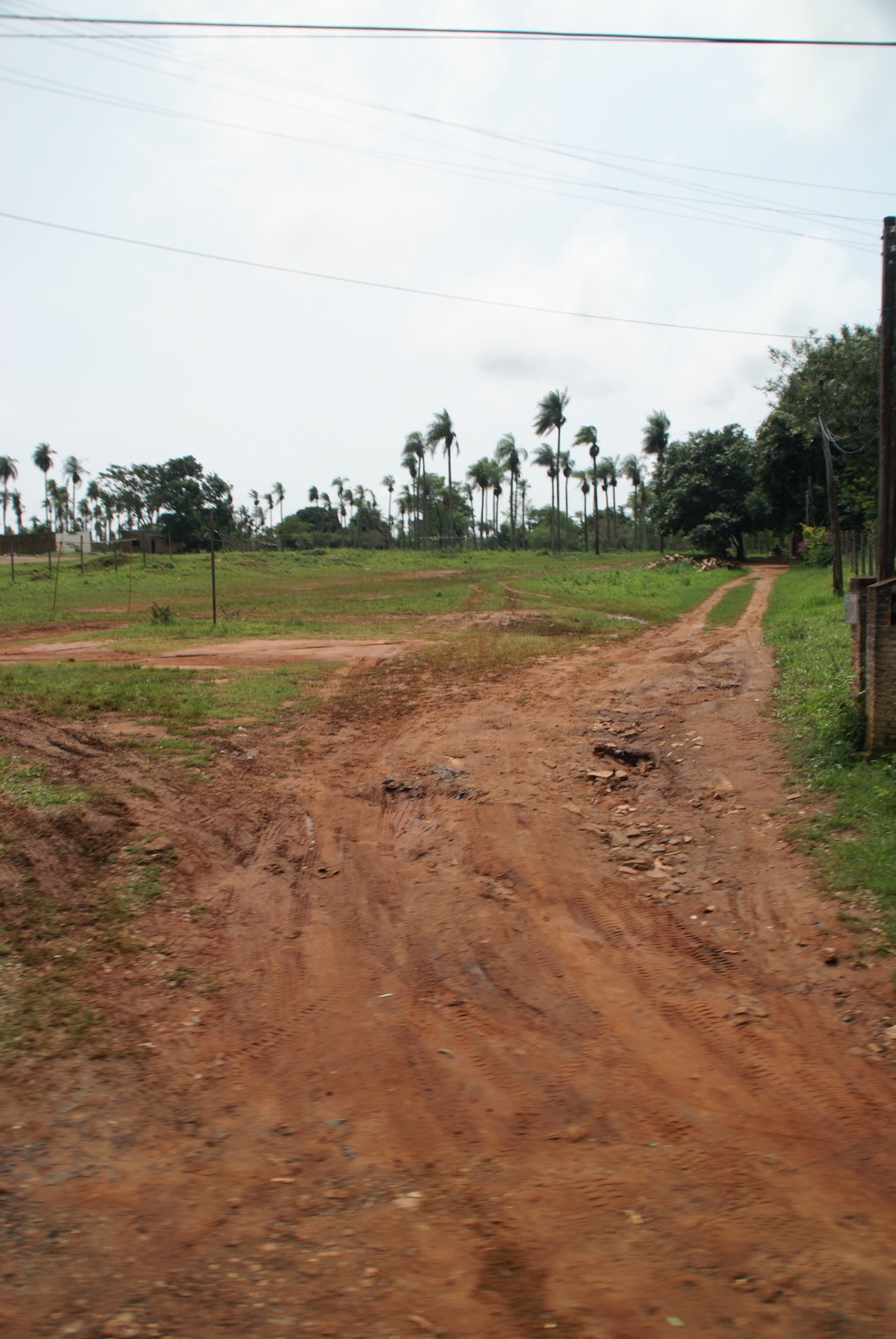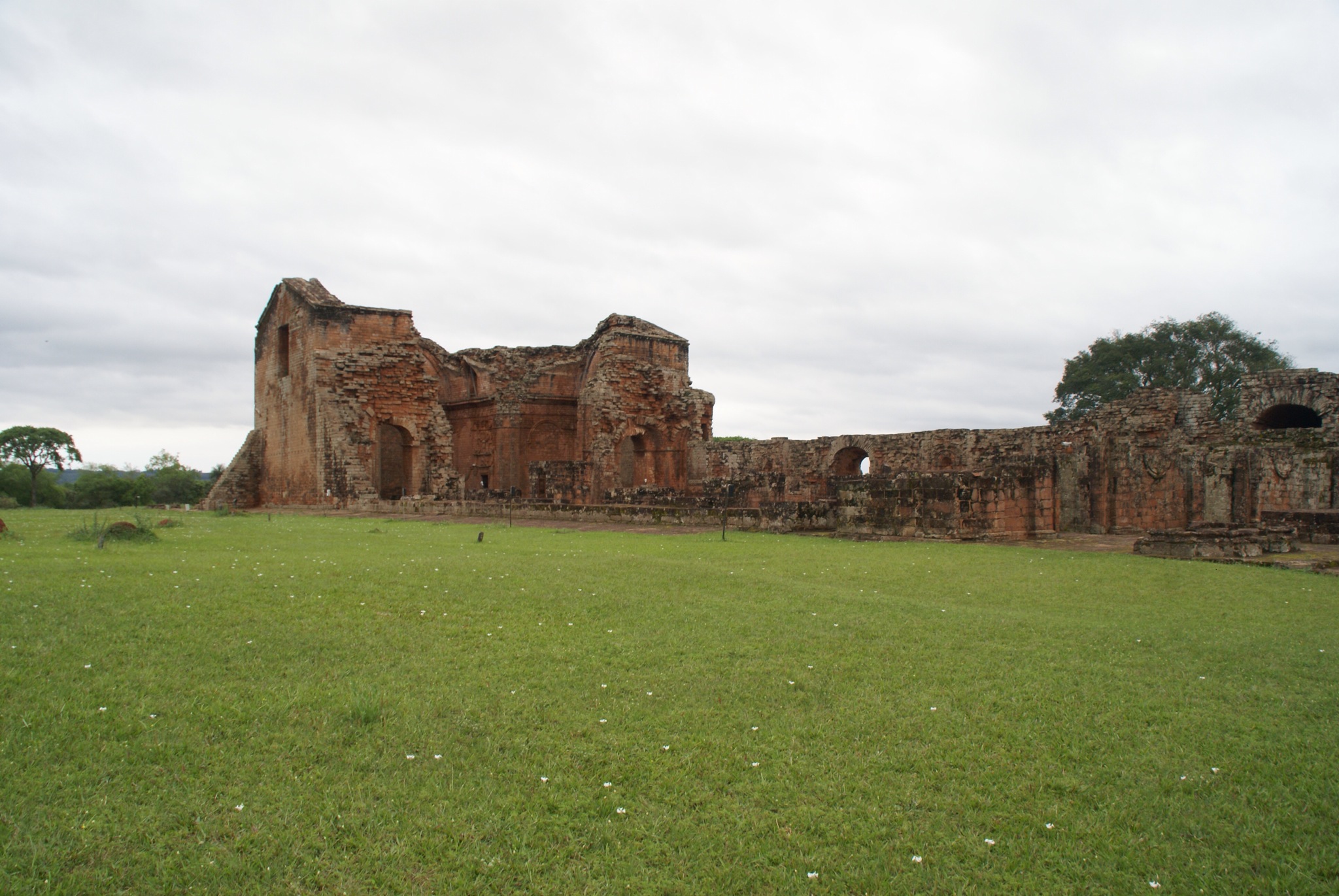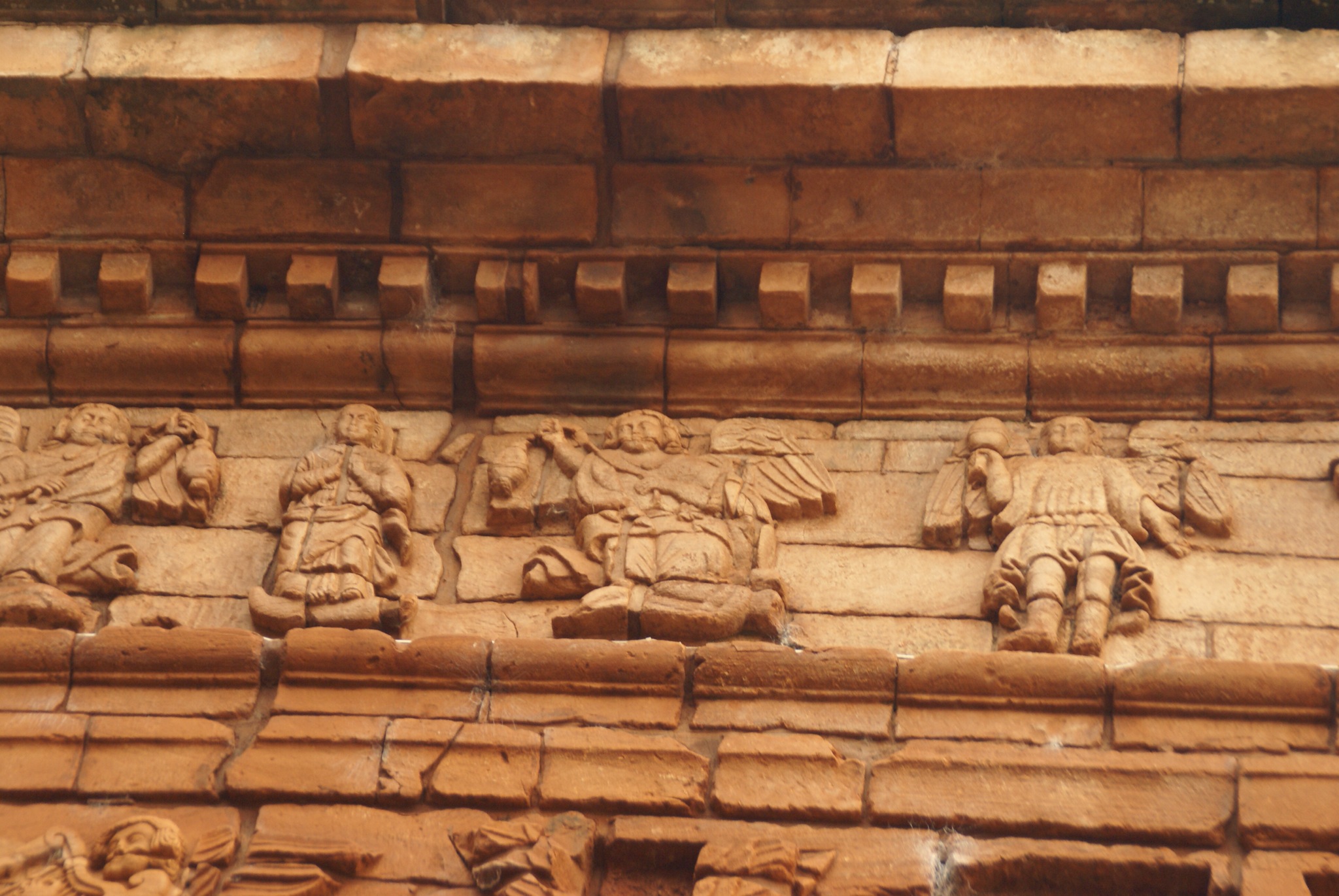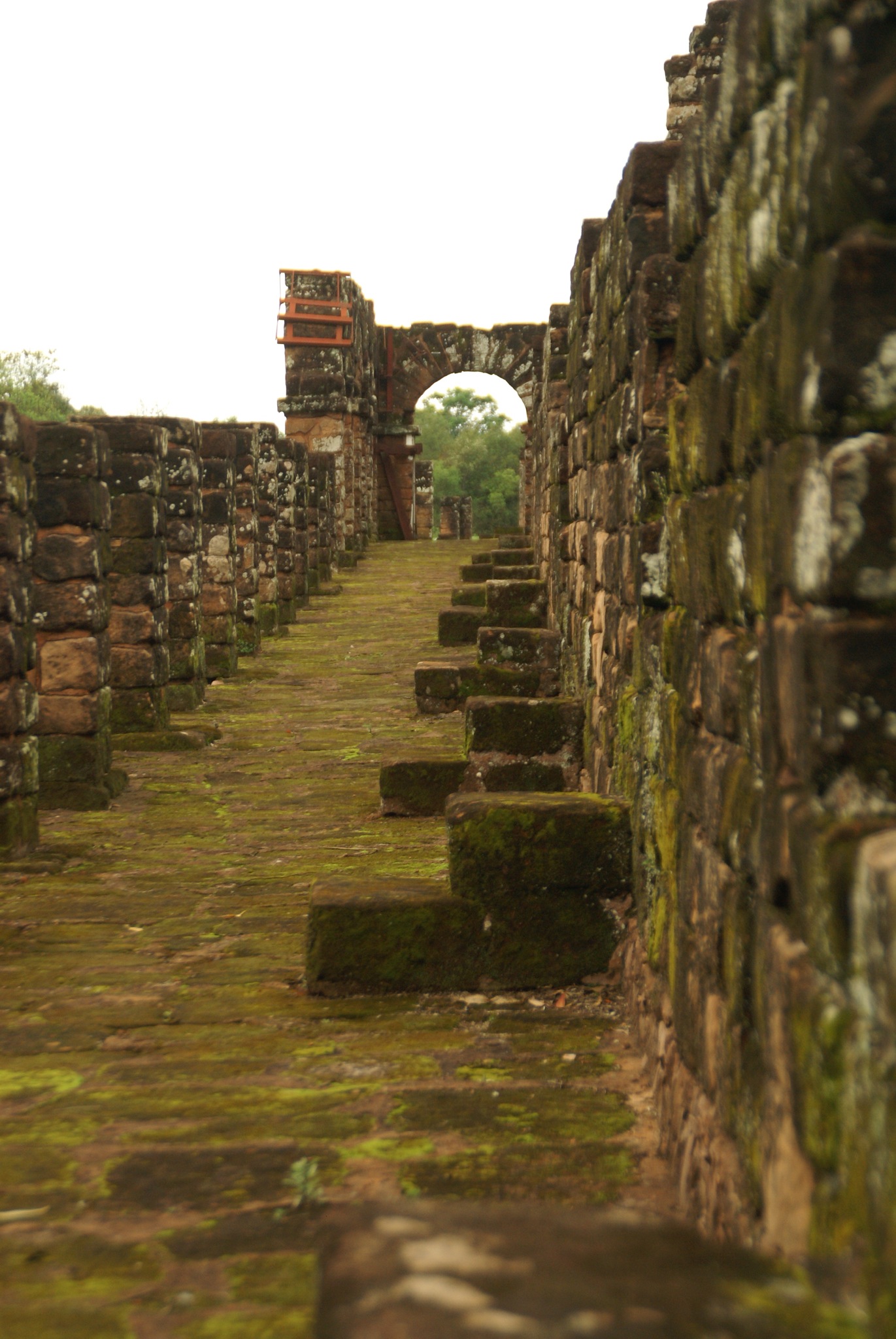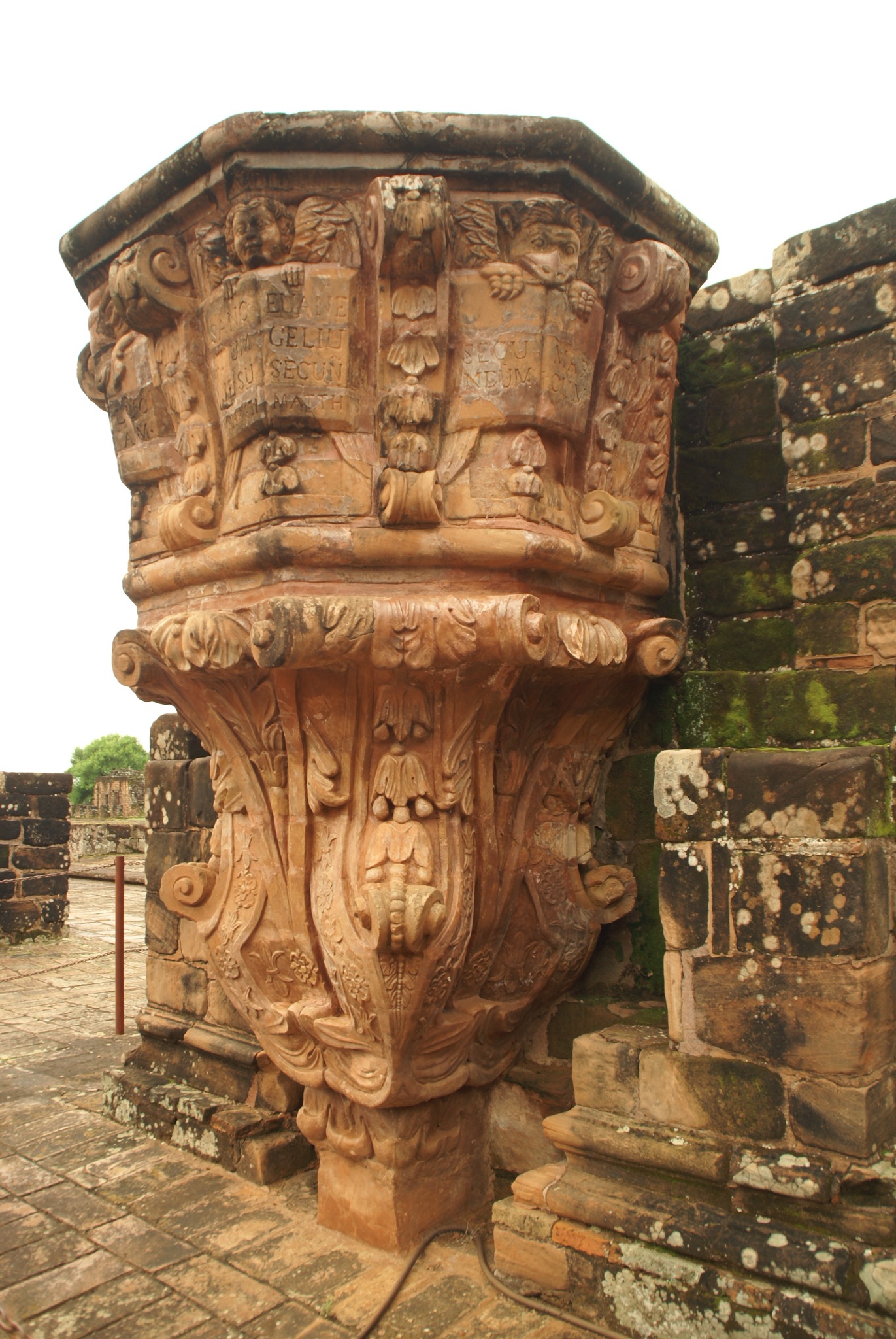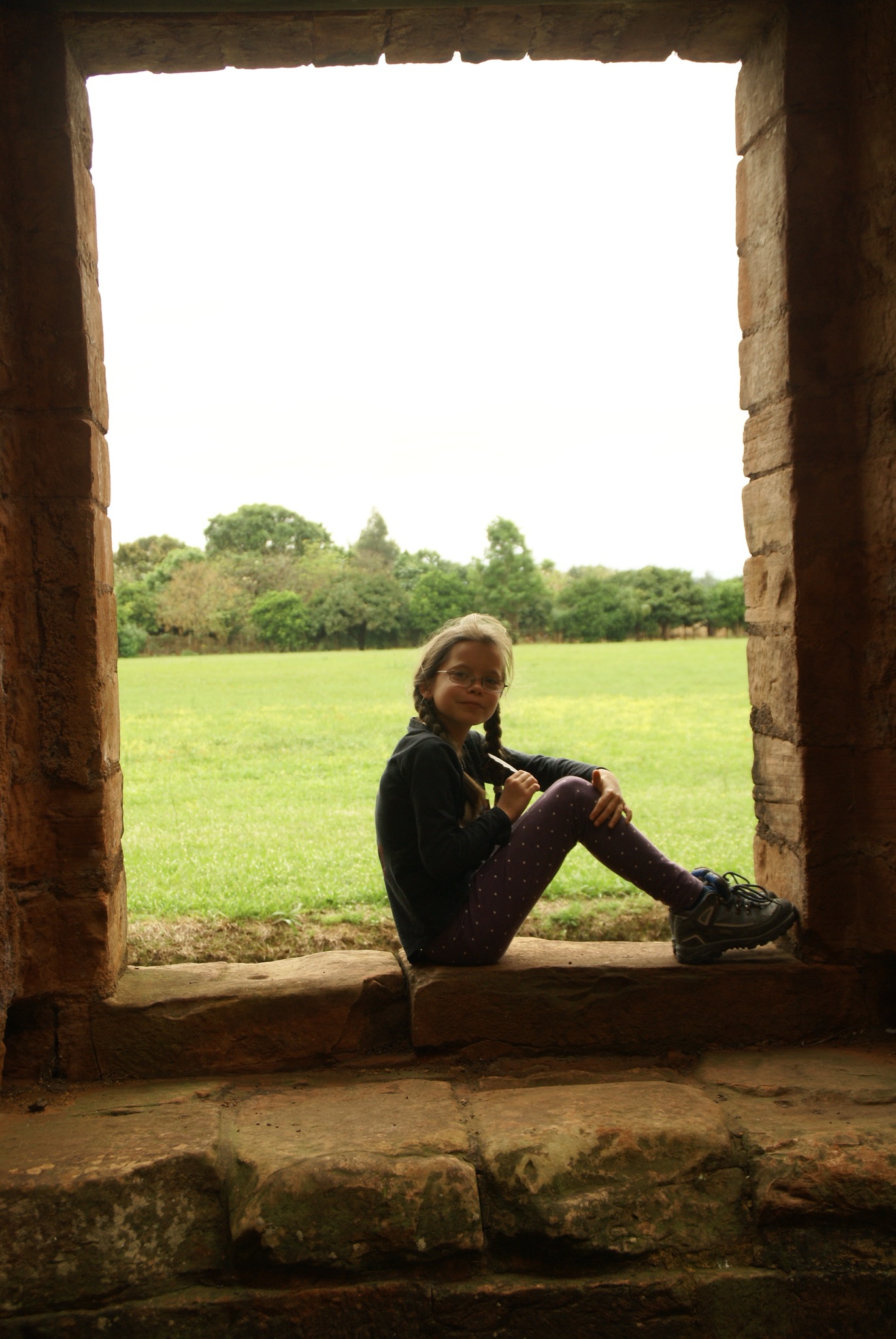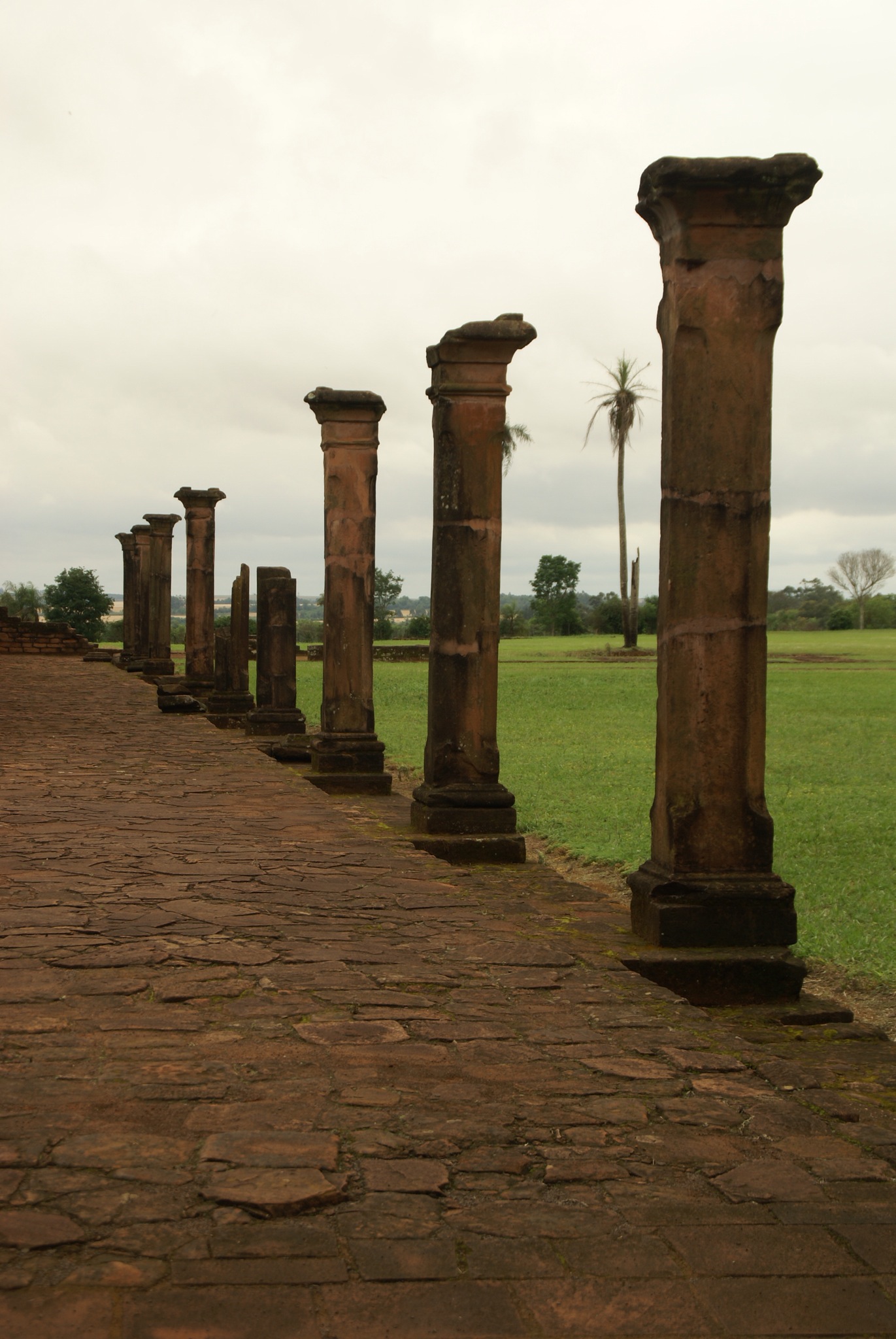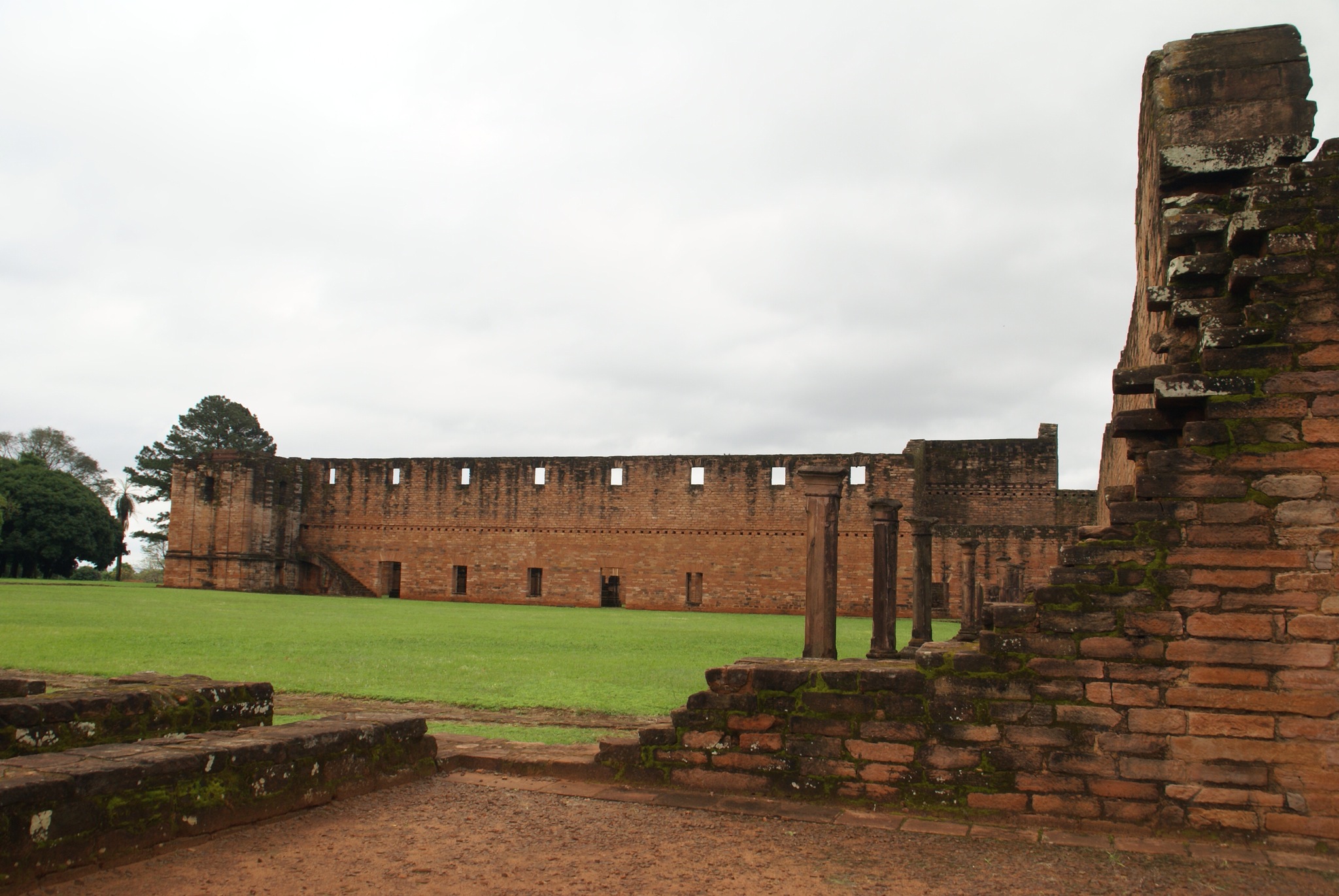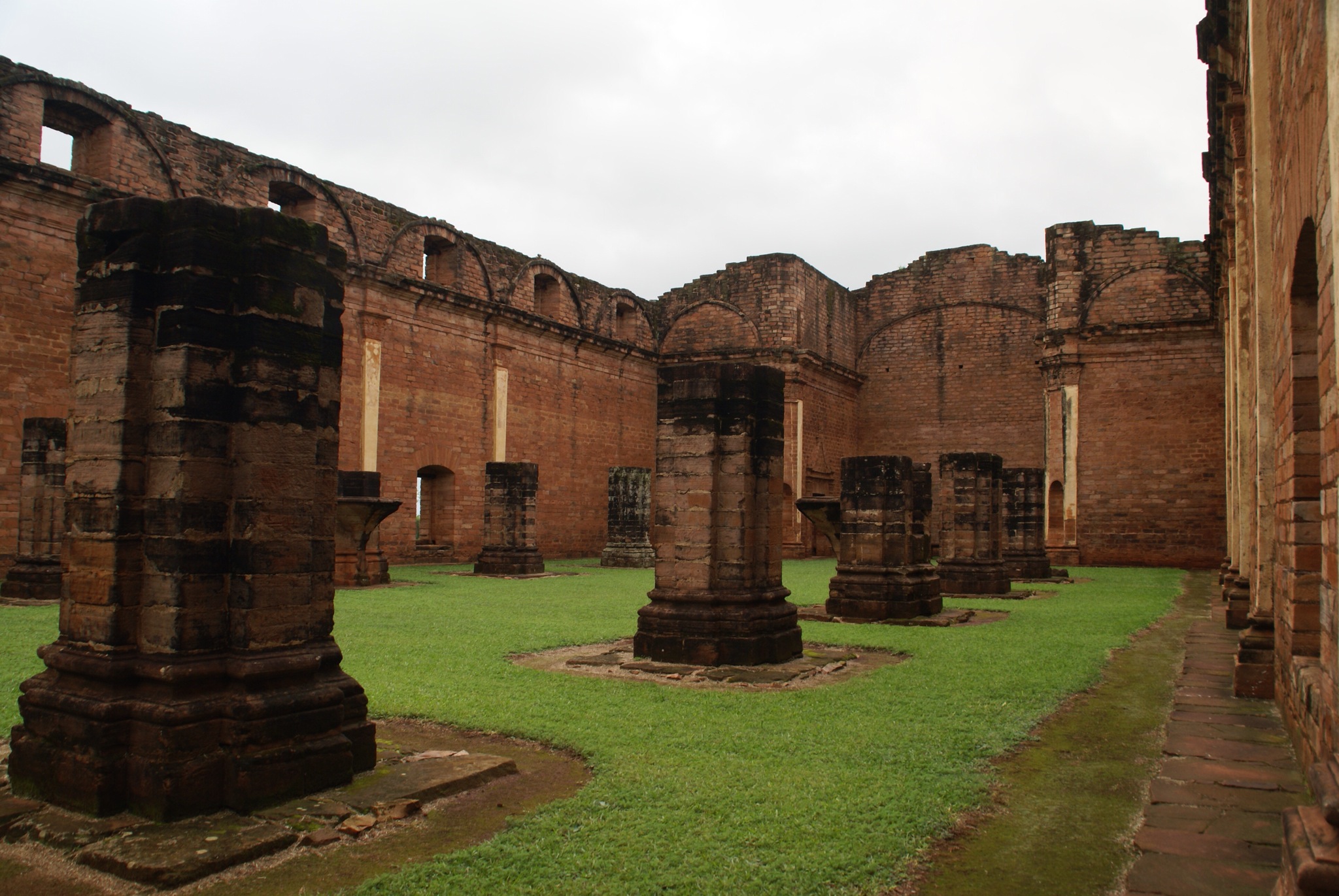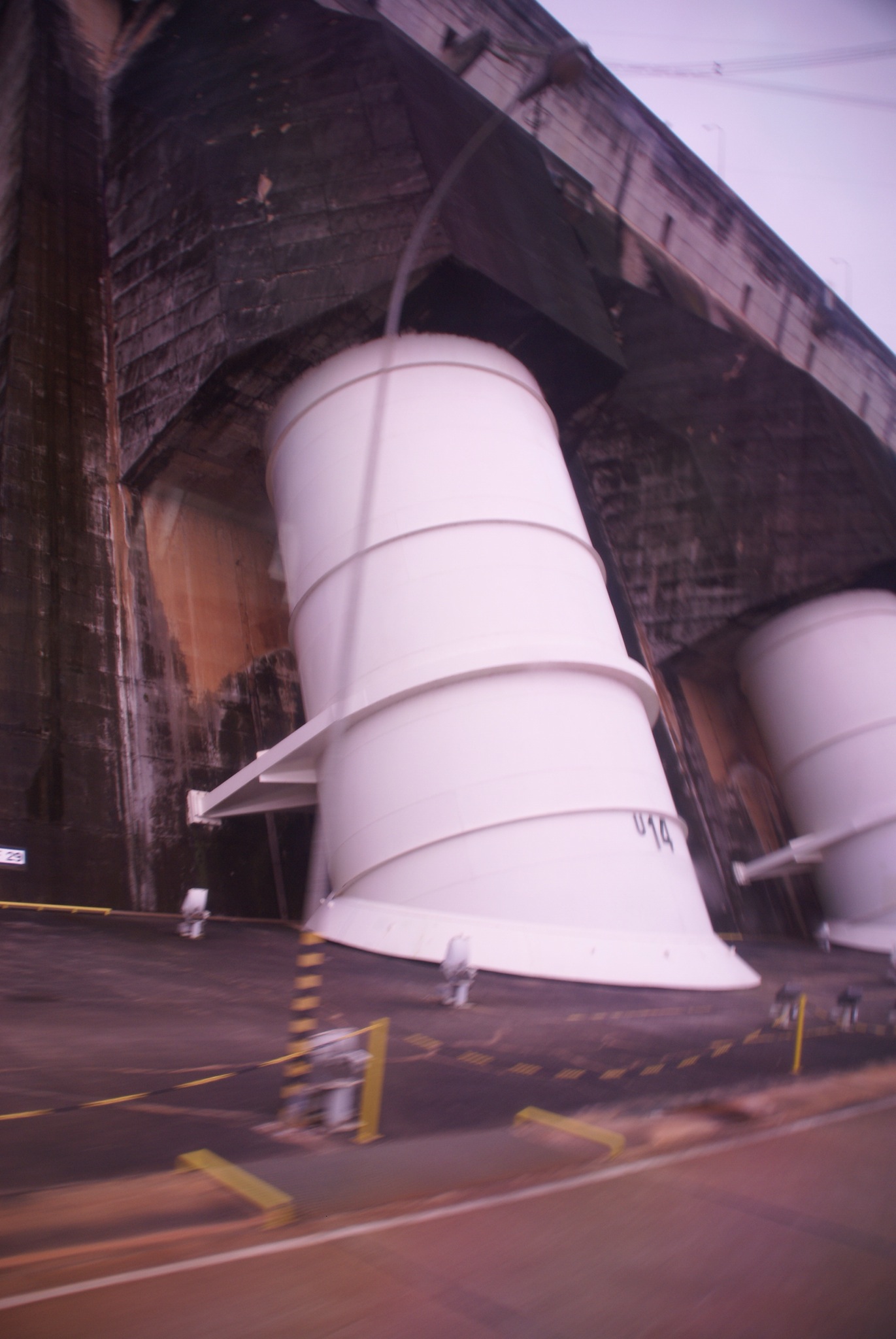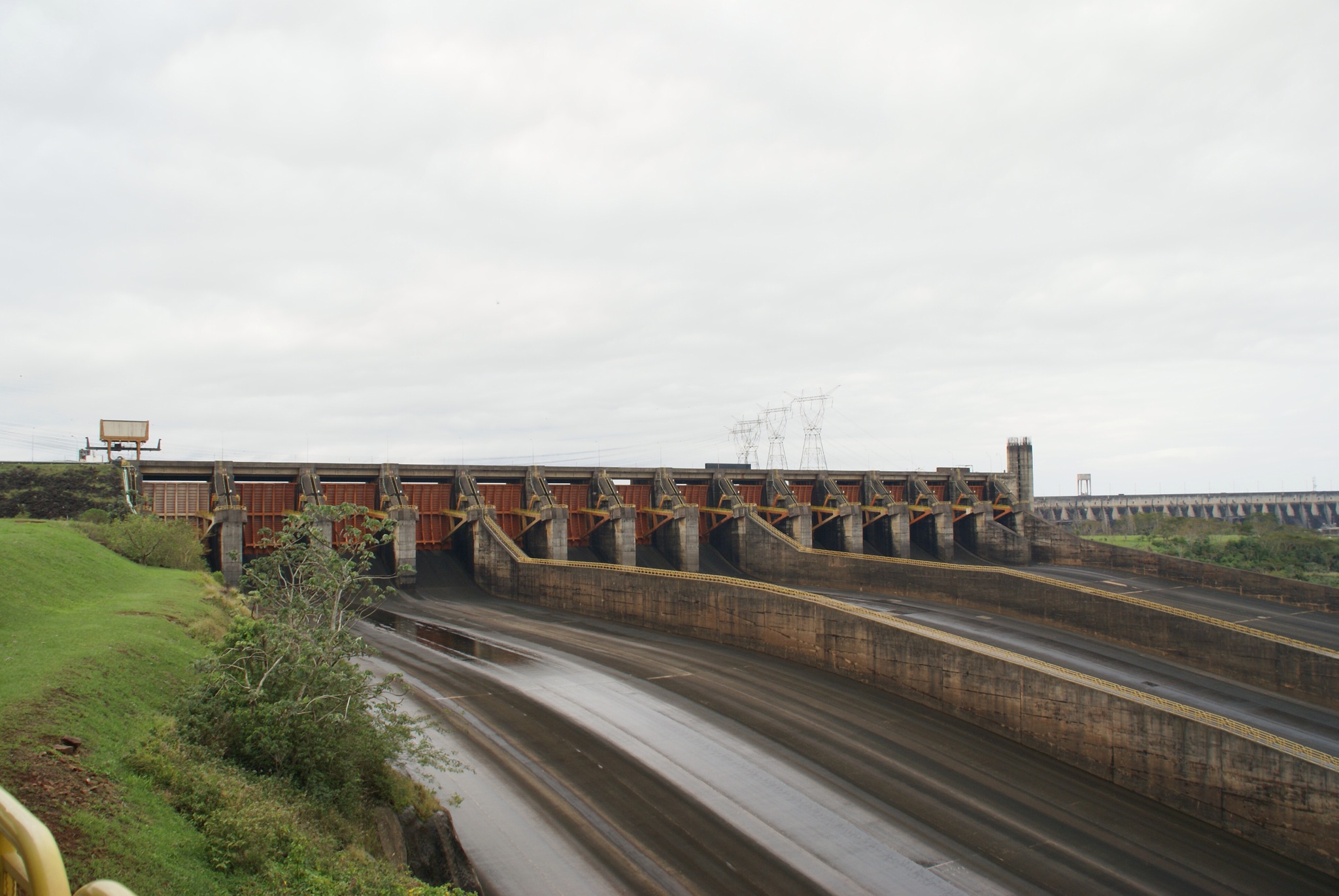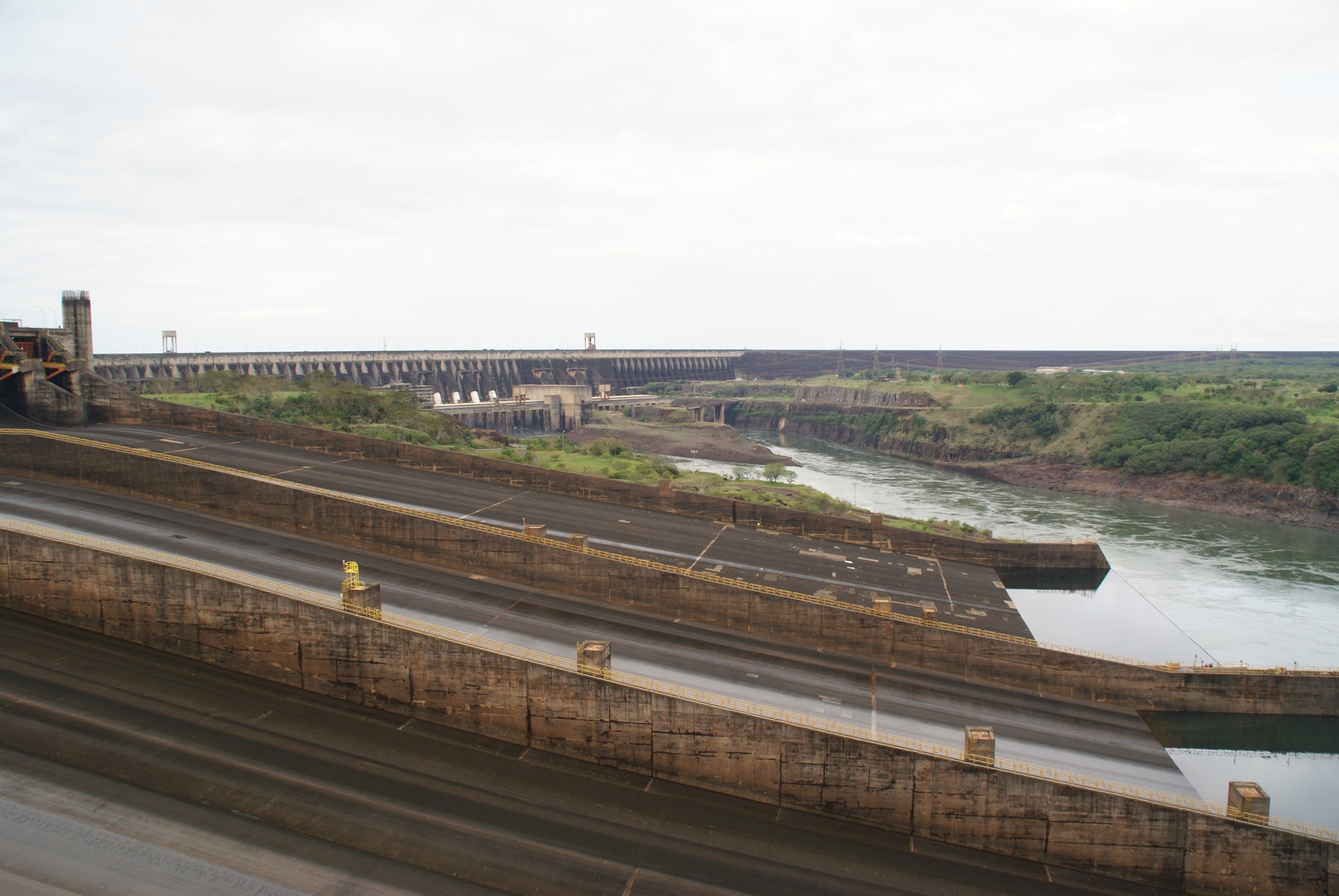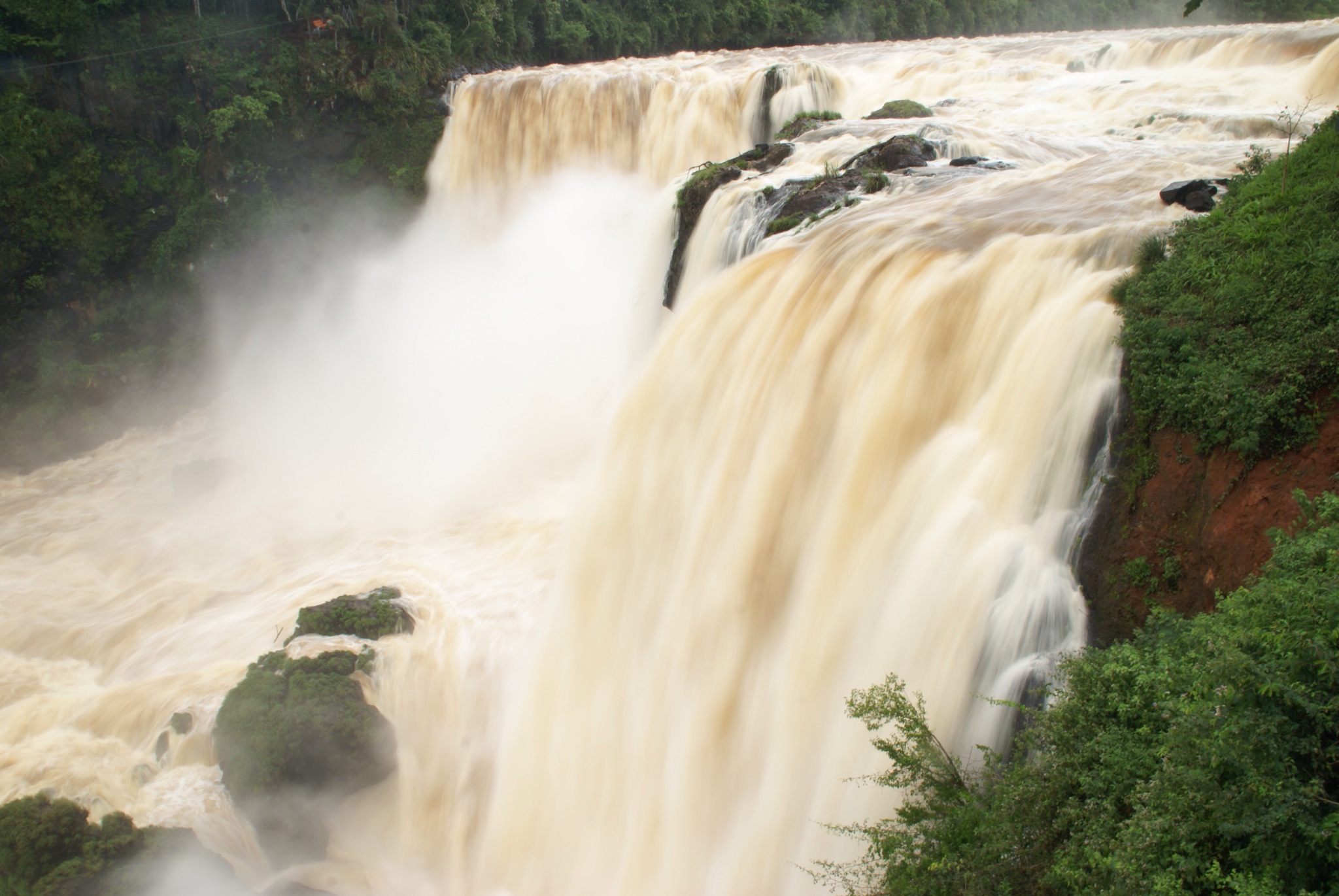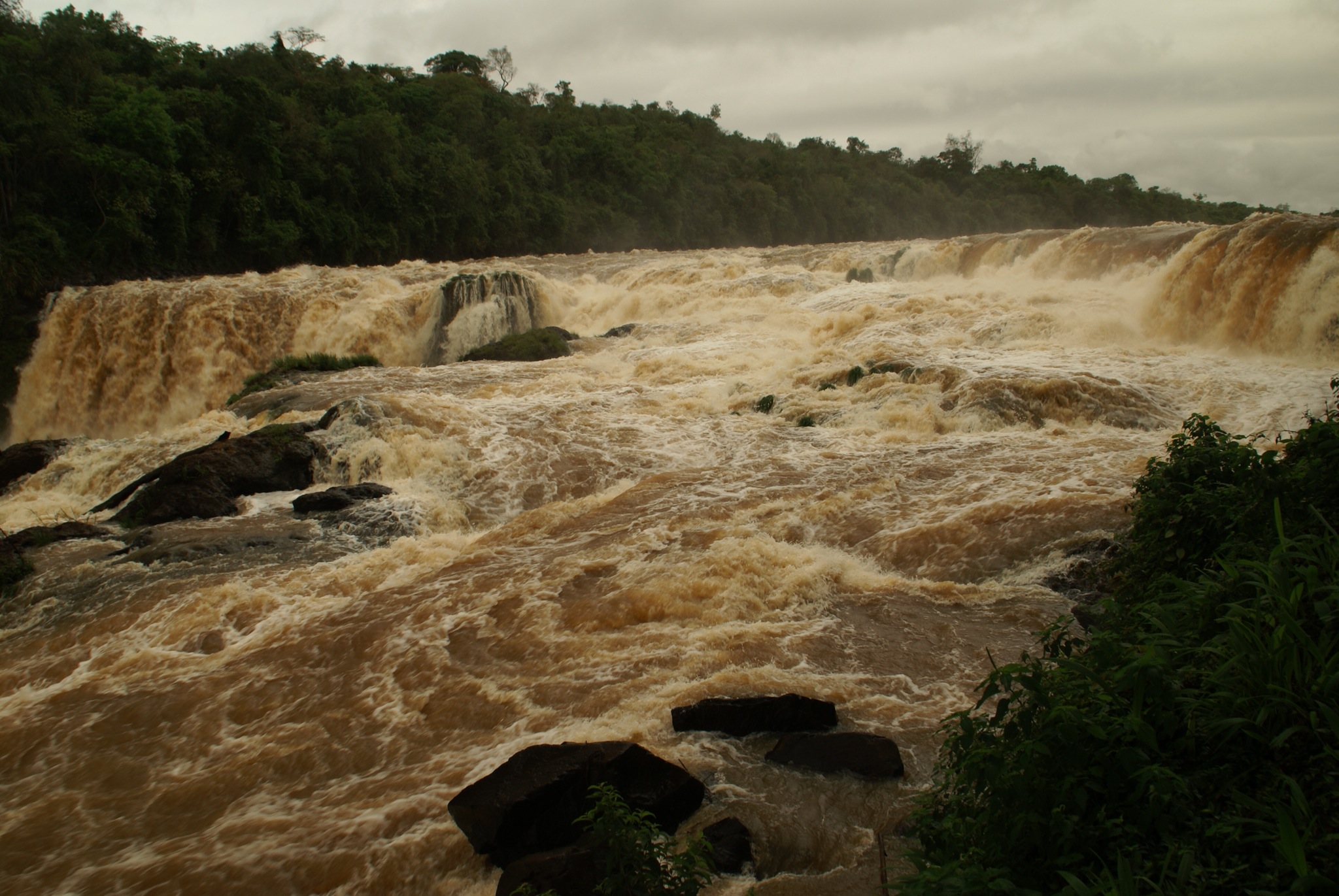Ascuncion, the capital of Paraguay, in spring is hot, close and very sweaty. Monday turned out to be a public holiday and the city centre was virtually empty. The few souls were lounging on park benches gently perspiring in the heat. Everyone carried a 3 litre thermos flask of icy water, a cow horn cup and a silver straw with a filter at one end. Much as I thought the Argentines love their mate (see my last blog), the Paraguayans seem to love their icy equivalent: terere, even more. Also made with the Yerba Mate herb, it can also be mixed with other herbs. We saw many stalls selling a range of herbs, like a witch's potion ingredients, to be ground up with a mortar and pestle and added in the east of the country. Ubiquitously drunk by all ages and in all places, driving, lounging, working, by policemen, mechanics, cowboys and school kids. A good way to rehydrate in the heat it is never far from a Paraguayans lips
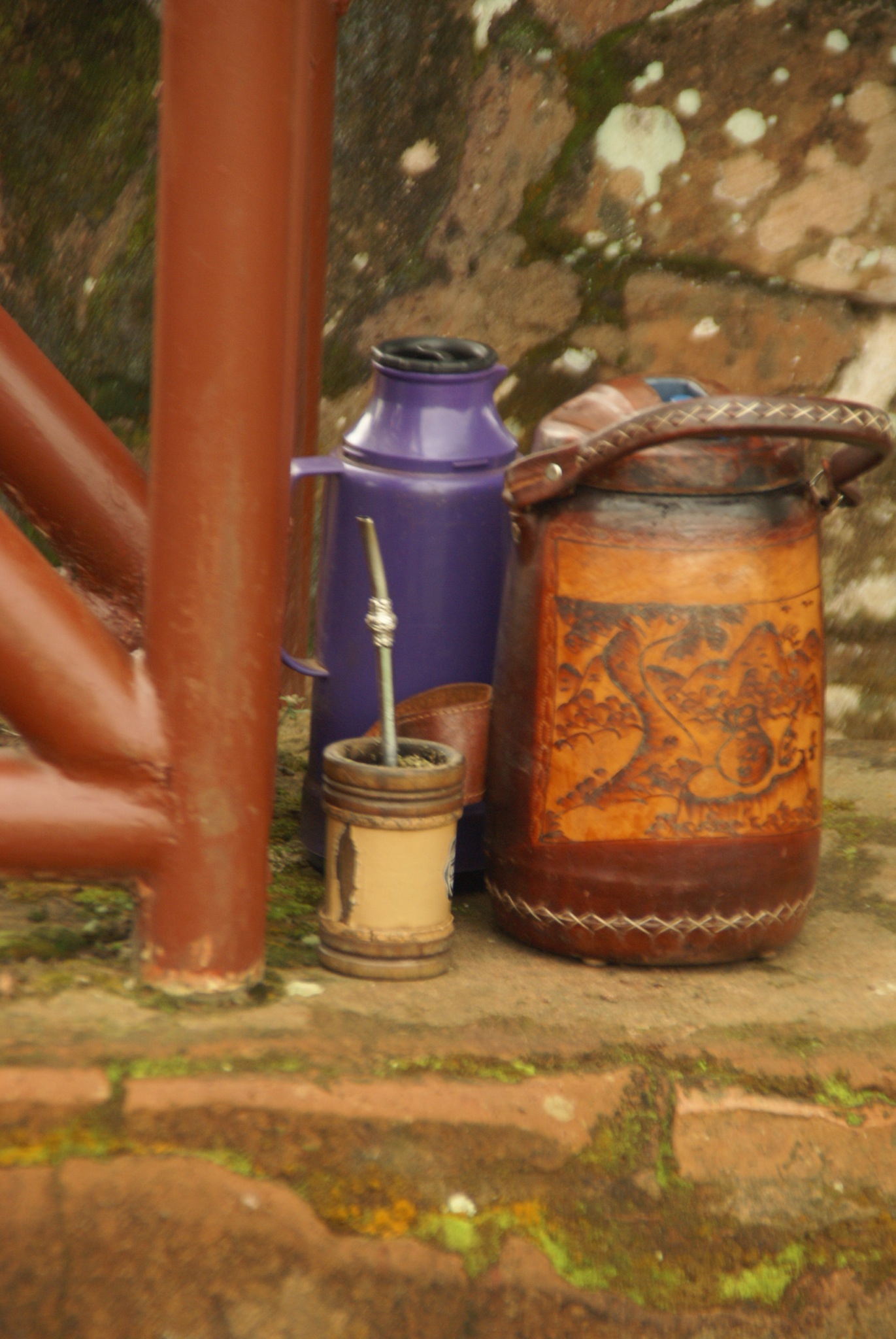
I took this photo close to the Argentinian border, so this drinker obviously likes to switch between the hot mate and cold terere
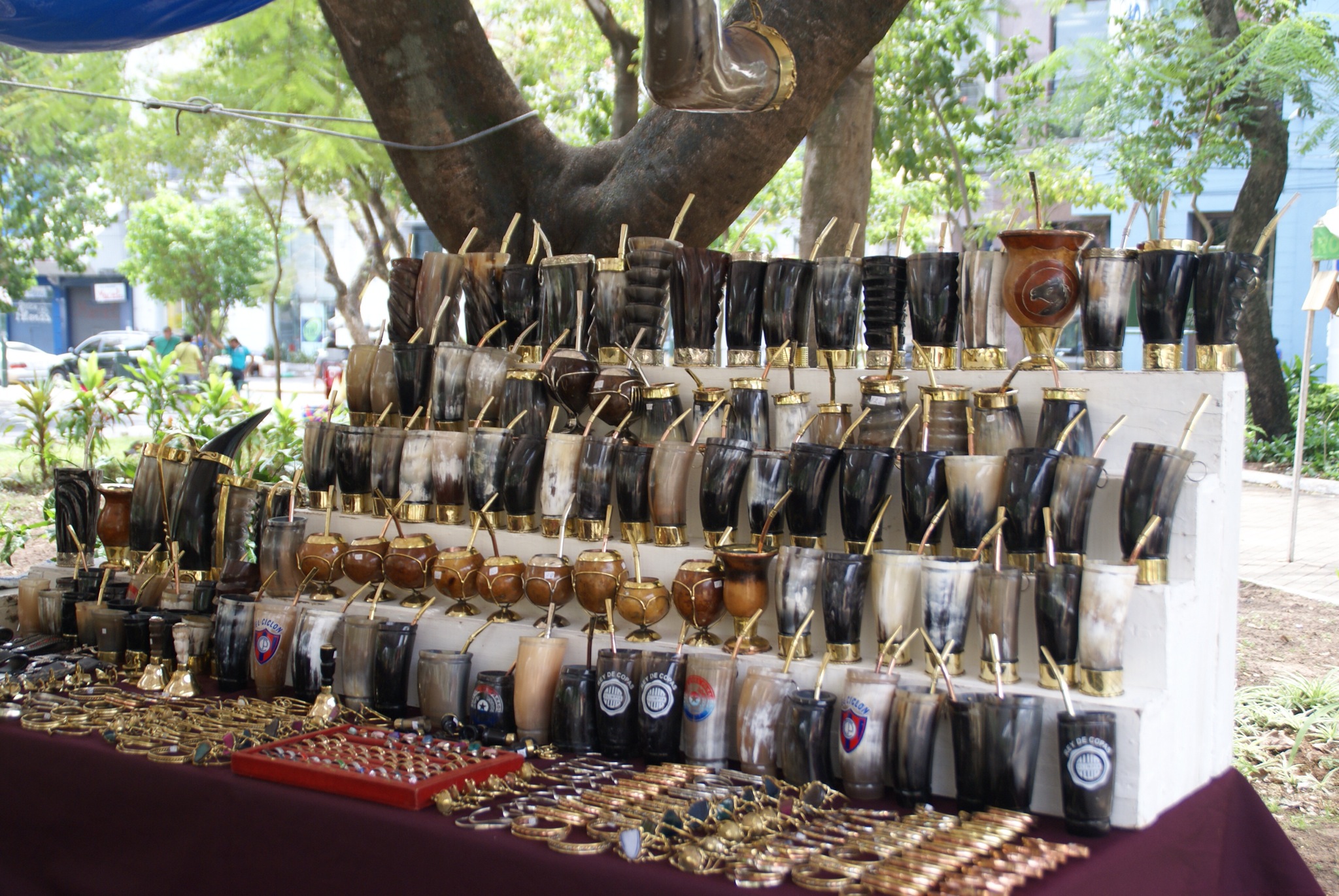
The city centre was an interesting mix. Overlooking the smart river causeway with its cycle path is the huge pink Palacio López, the seat of government, with manicured grass and liveried soldiers. Next door is the equally pink and only slightly less grand old seat of government now a museum, but between them and spilling out into the Plaza de Armas was lots of plywood shacks. In cities often the dispossessed are pushed out to the city margins but here they were right next to the power. The streets became more gentrified the further away from river we explored.
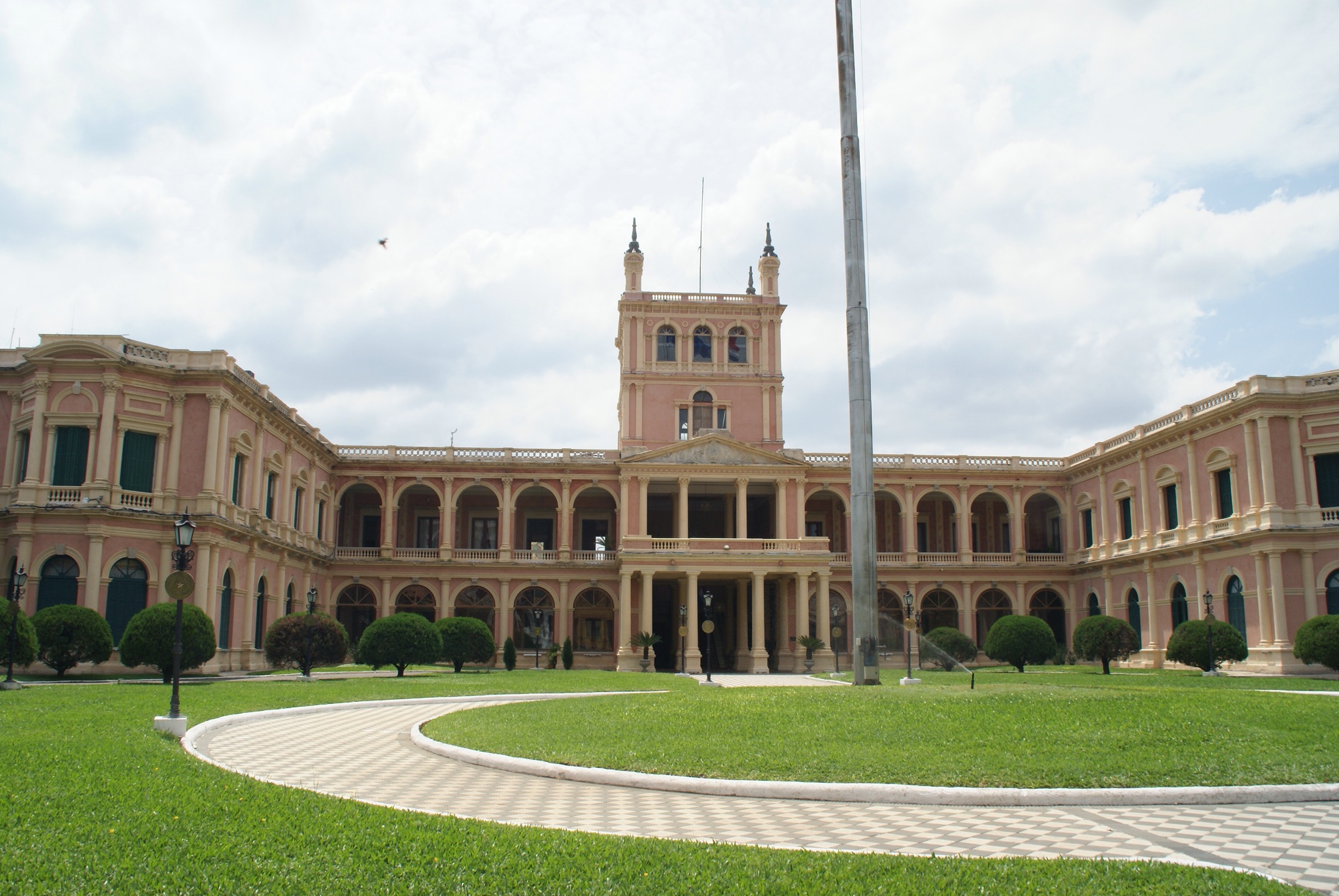
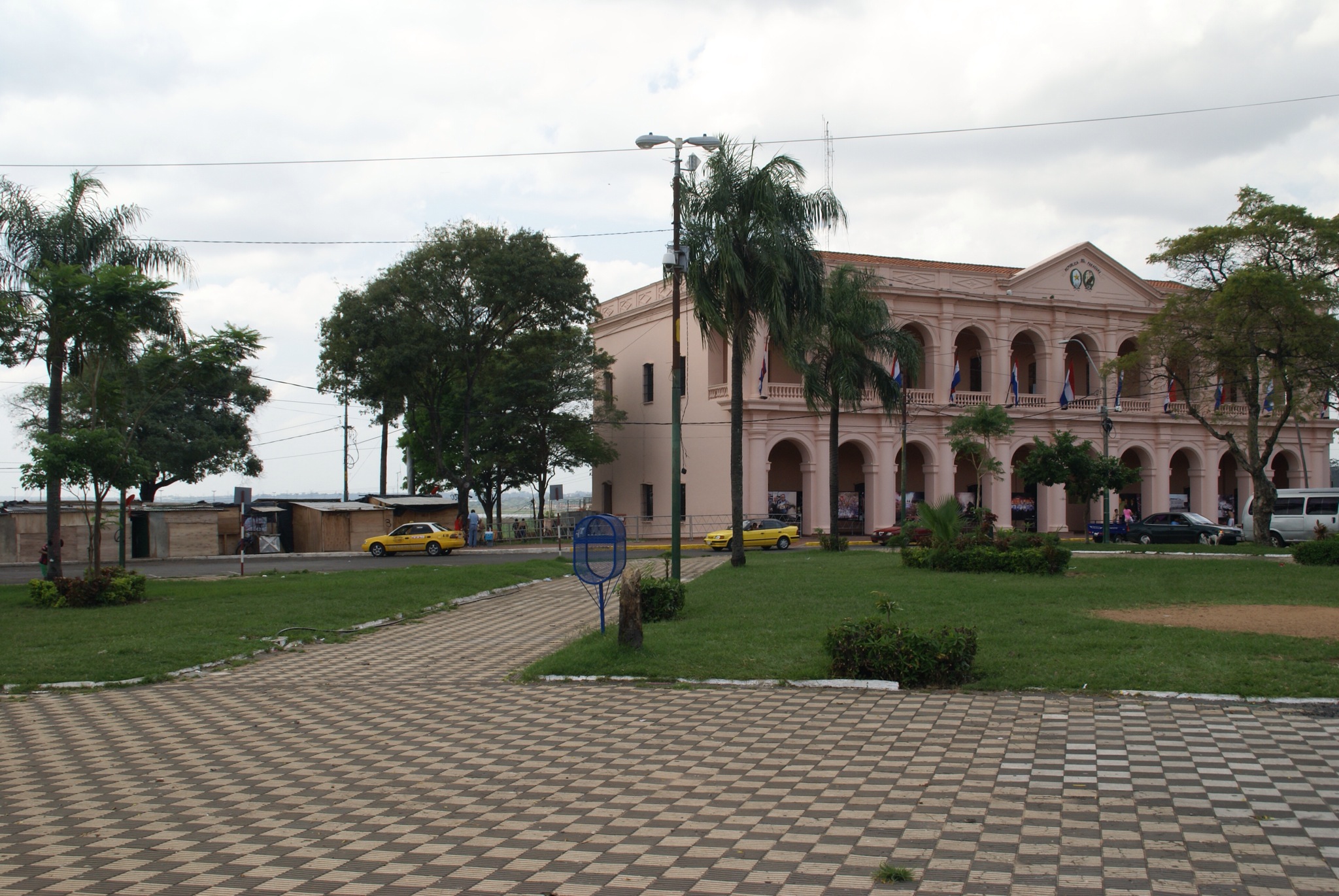
The city's population gave us a good insight into the cultural melting pot that Paraguay is. The Spanish Conquistadors spread their seed widely by the use of coercion and bribery amongst the indigenous population, so there are many mezitos (those of mixed Indian and European blood). Many groups have immigrated since then to make their way in what was promised to be a land of plenty: Poles, Germans, Ukrainians, Australian Utopians, Mennonites and the most infamous group: escaping Nazis. Hoping for a better life than they had at home, many prospered and intermarried, creating an even bigger genetic mixing pot. It was common to see blond European types built for farming, petite raven haired Indians and even a striking looking olive skinned man with ginger hair.
By lunchtime we were fading into a sweaty heap, back at the Botanical Gardens it was hoping with families and friends enjoying the bank holiday. The camping area was set in a remote area in the heart of the park, the preceding evening in the growing gloom it had seemed a rather dark, forbidding place, full of mosquitoes. The park gates were shut at seven and we appeared to be the only people there. The golden rules for camping out is "trust your instincts" and mine were telling me that this wasn't a good place to stay, Steve however shared none of my concerns. With no other options, I spent a restless night jumping at every rustle outside. Once back from town, we drove out of town looking for a different spot to park up. We had to pick up our washing the following morning, so leaving completely wasn't an option. After many miles of urban sprawl, we returned despondently to the Botanical Gardens and parked up in the main car park near the gate, near where the gate security was. At one am we jumped out of bed as soon as we heard a car approaching, fortunately it turned out to be security. Although apparently absent the preceding evening and negligent enough not to spot a huge truck in the main parking area once the gate closed at seven, they were now present and very concerned about our parking spot. They insisted we follow them up to the proper camping area, Alisha managed to stay in bed while we lurched slowly through the woods in the pitch black. Remarkably we found a whole pose of security guards in the campsite enjoying their terere in the slightly cooler night breeze. Steve managed to control his "I told you so" urges, as we eventually settled down for the rest of the hot sweaty night periodically interrupted by the girls demands for mosquito bite cream.
We awoke to the sound of children playing, as piles of school buses were parked up ready to take their charges to the zoo. With blue sky and sunshine and without the grey, close clouds it looked far more inviting. Whatever our feelings about caged animals, we had promised the girls a trip to the zoo after schooling, so we joined the throngs before heading out of town. Just over the River Paraguay just a few kilometres from Ascuncion is the start of the Chaco. A huge plain taking up two thirds of Paraguay's land mass but less than 5% of the population. The eastern part has widely distributed cattle ranches and just one main road through it The verdant pasture was fenced on both sides, so there were few chances to pull off the road for the night. Eventually we found a pretty small roadside shrine with a flat space for the night, as we pulled in at six it was 40° Celsius. It was still 36° C when we went to bed but at midnight a deliciously cool breeze started up heralding the massive thunderstorm that had been threatening for days.

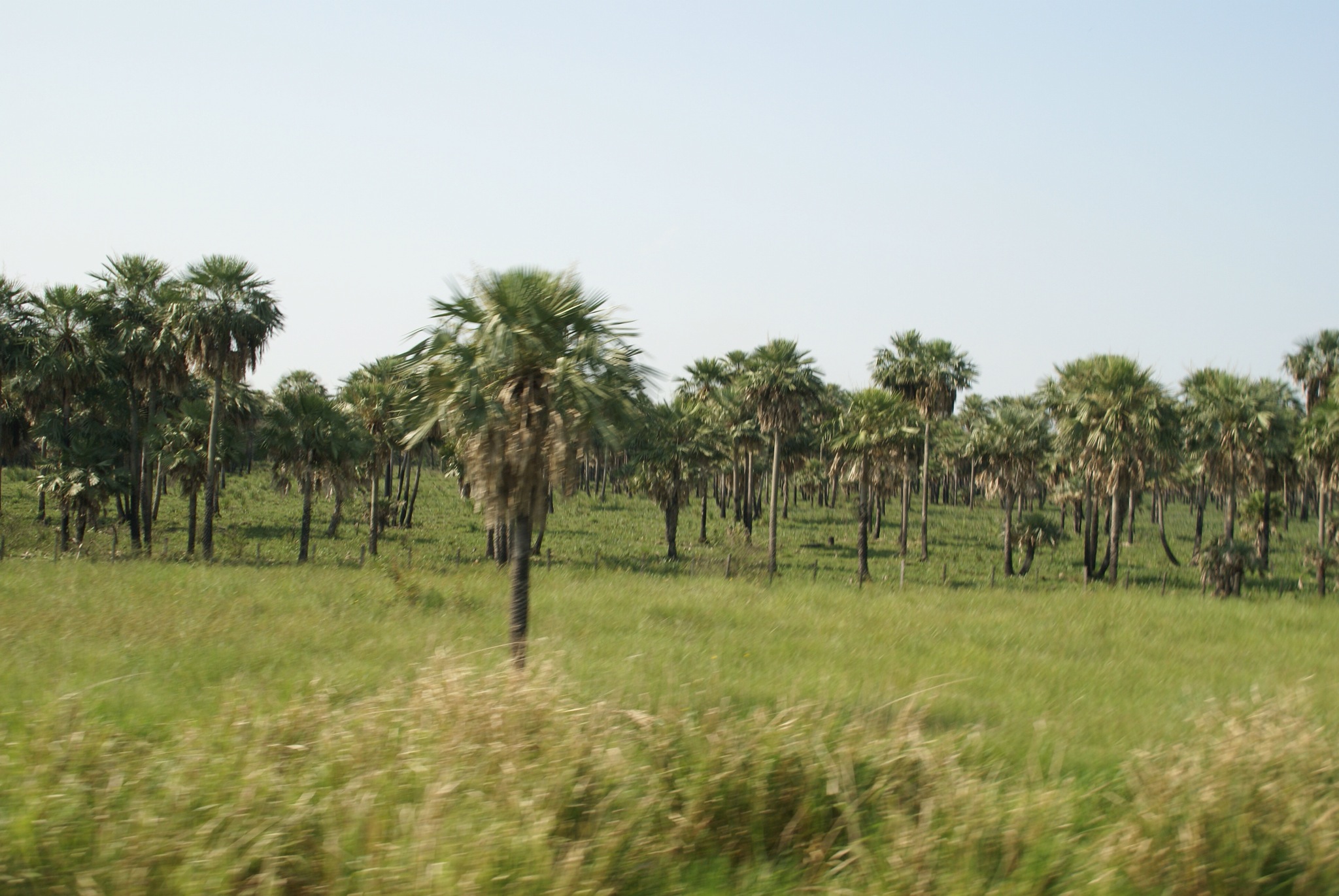
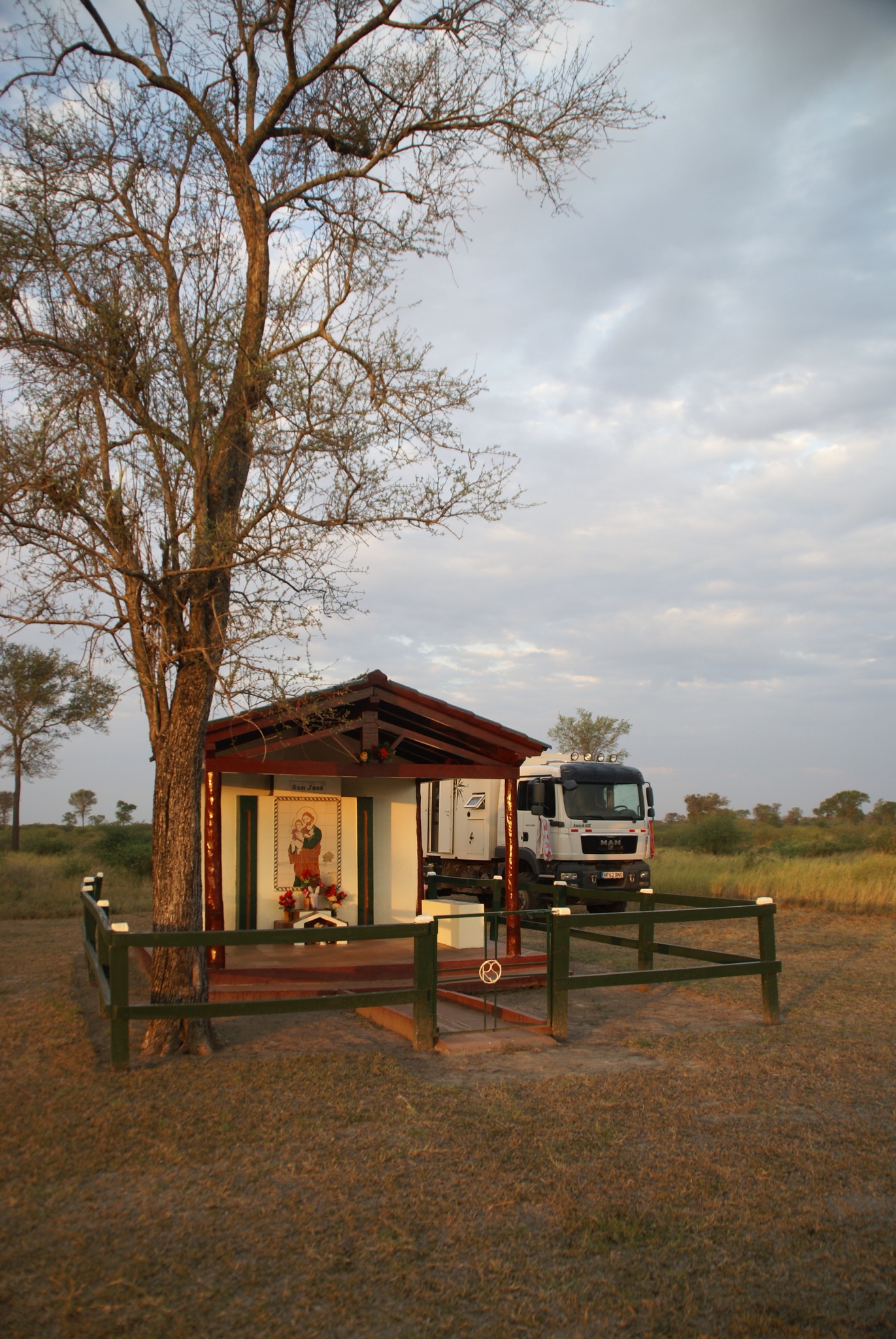
On the road at six the next morning we hoped to see some of the Chaco's non-bovine species. The truck stop in the middle of nowhere famous for the "best empanadas in Paraguay" according to our guide book made a good stop to pick up breakfast. Back on the road the wildlife (except for the birds) eluded us, admittedly game viewing from a moving vehicle on a tar road is not ideal but we arrived in town Concepcion having seen two road-kill anteaters and a dead armadillo, a bloke was carrying to take home for the pot.
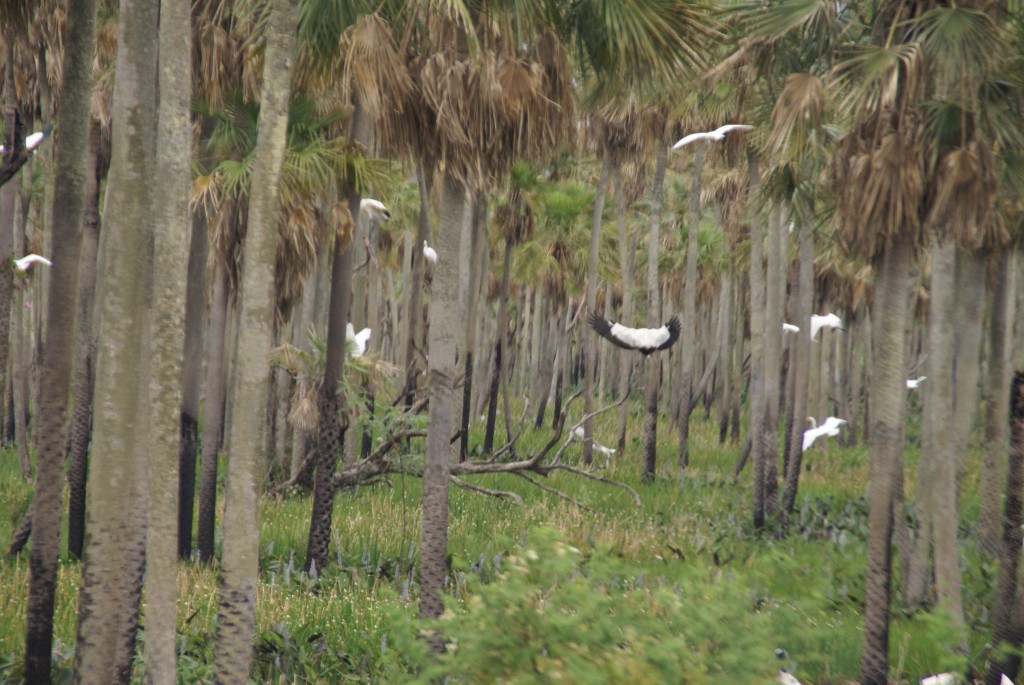
The sleepy riverside town of Concepcion gave us a leg stretch and a chance to try some Brazilian cuisine. The menu had two options: beef or beef with cheese with a buffet of sides. We had eaten our fill from a huge plate of meat, when the waiter approached and asked if we'd like a refill. Steve giving into his carnivorous urges asked for "a tiny little bit more", the plate returned heaving with meat again. Even more surprising was when we got the bill, was that we'd only had two portions of meat, not the three we had originally ordered.
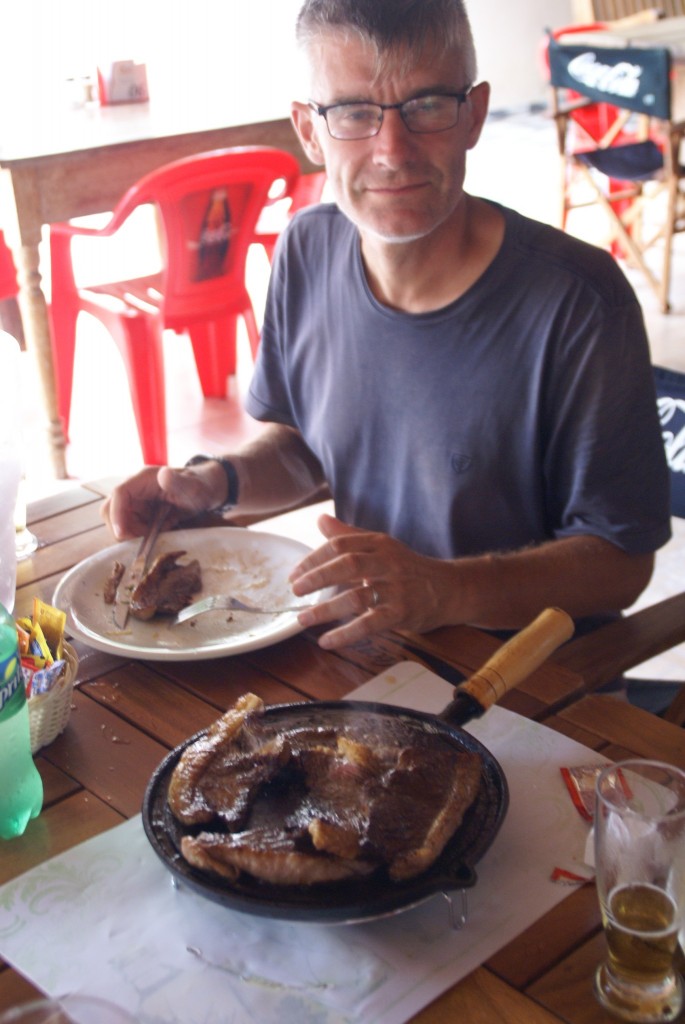
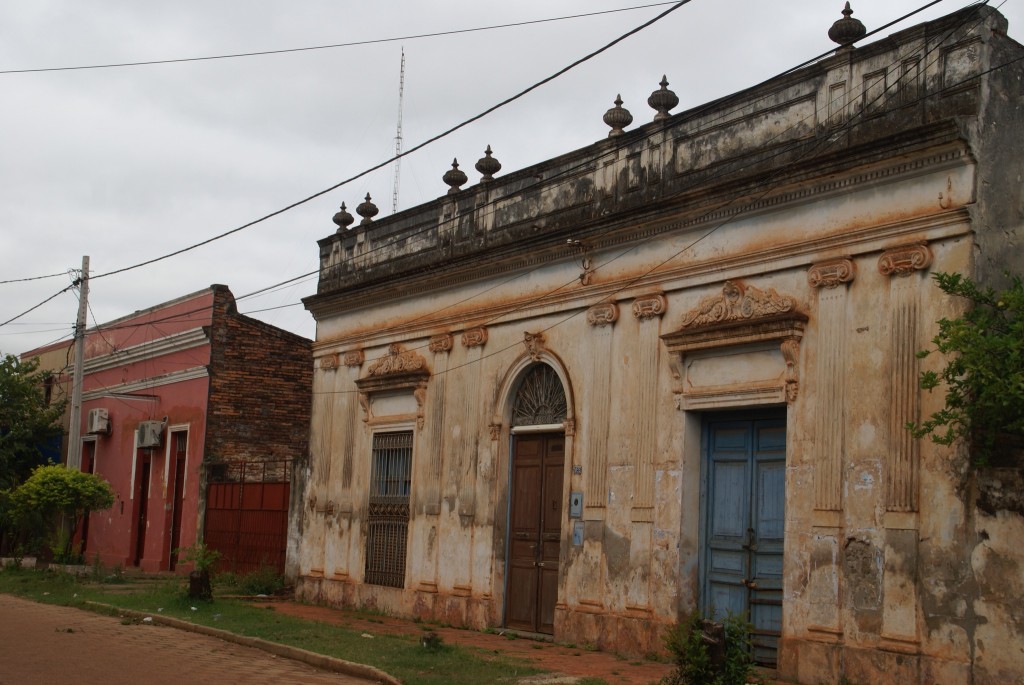
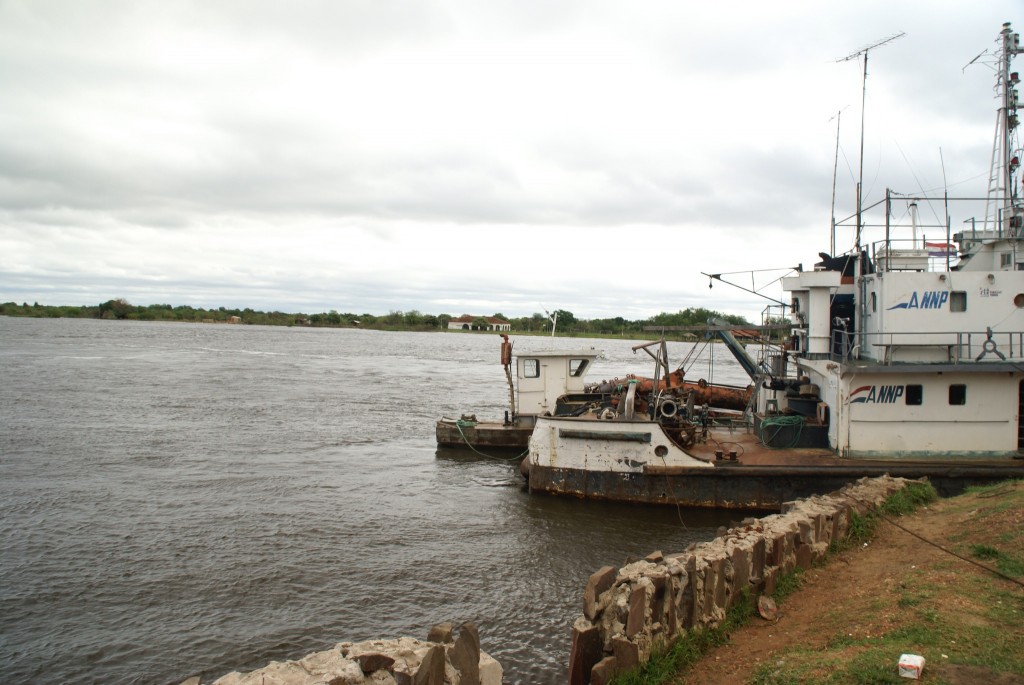
A few kilometres out of town we'd heard of an farm that welcomed the few tourists that come to Paraguay. El Roble was a pleasant farm with fish ponds, cattle, pigs, a host of rescued animals and most importantly for our girls three lovely, friendly children. After an initial hesitancy due to the language difference, they soon got stuck in making sand castles and playing with the baby rabbit. The following day was spent lazily in their lovely garden with a tapir wandering around in the background.
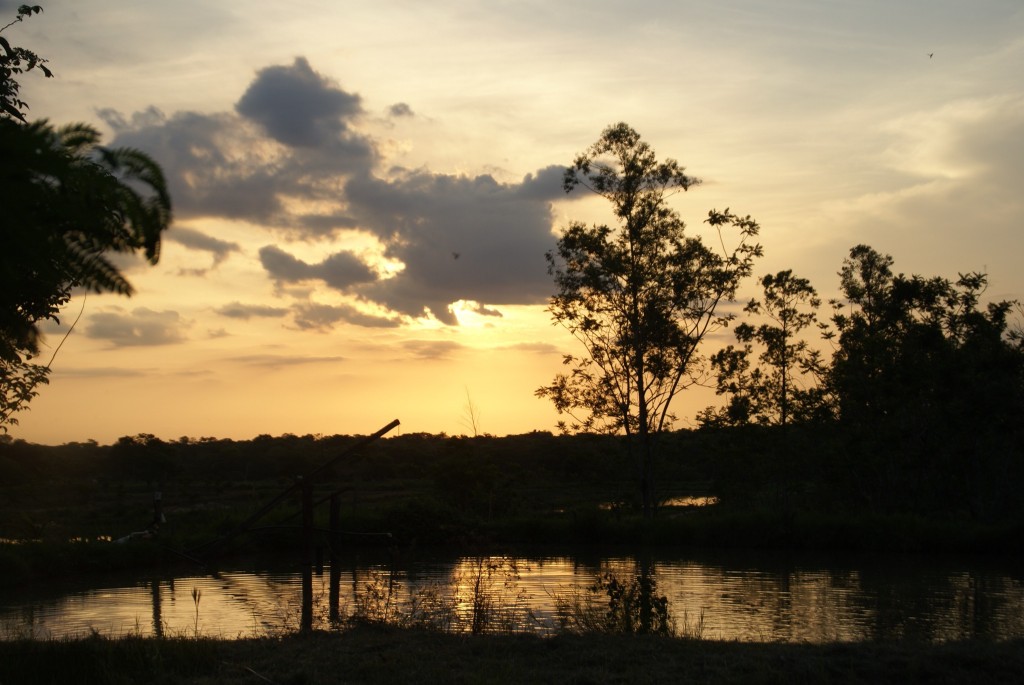
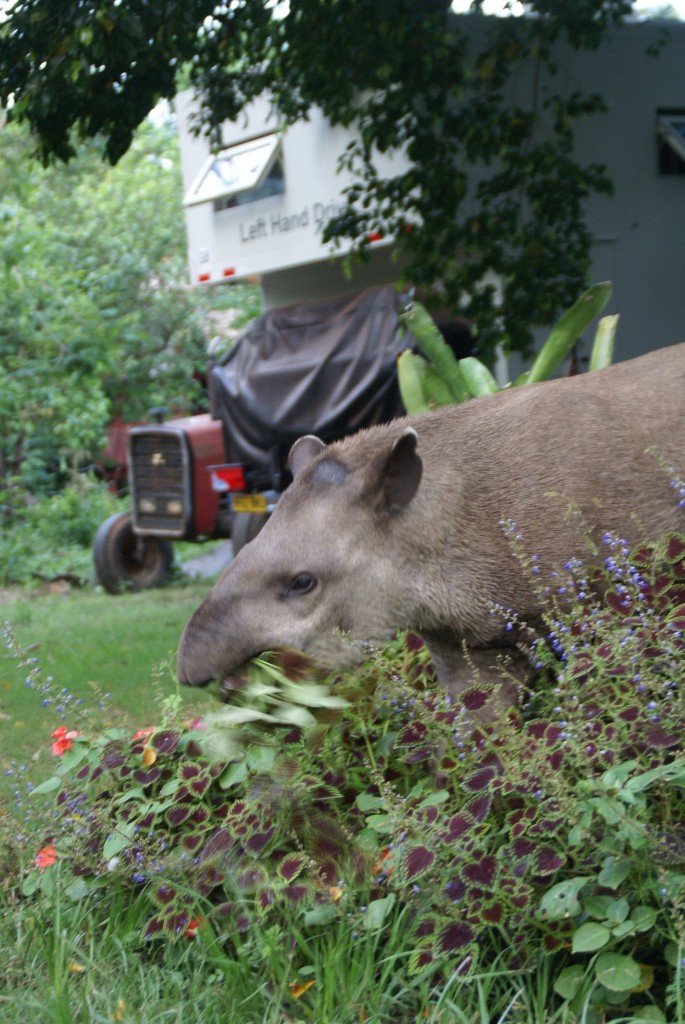
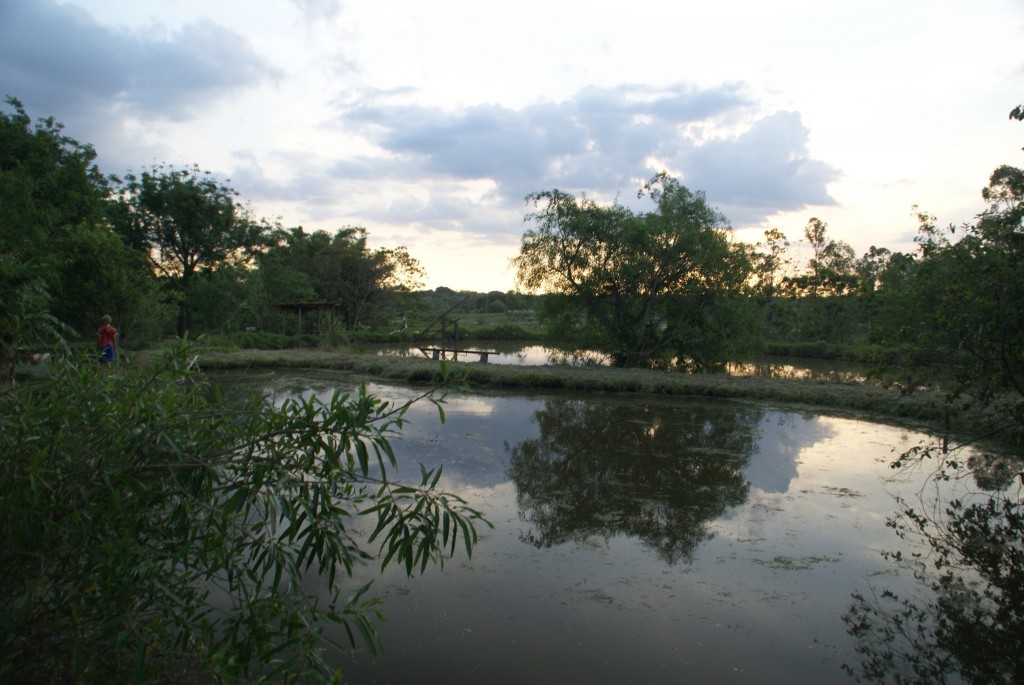
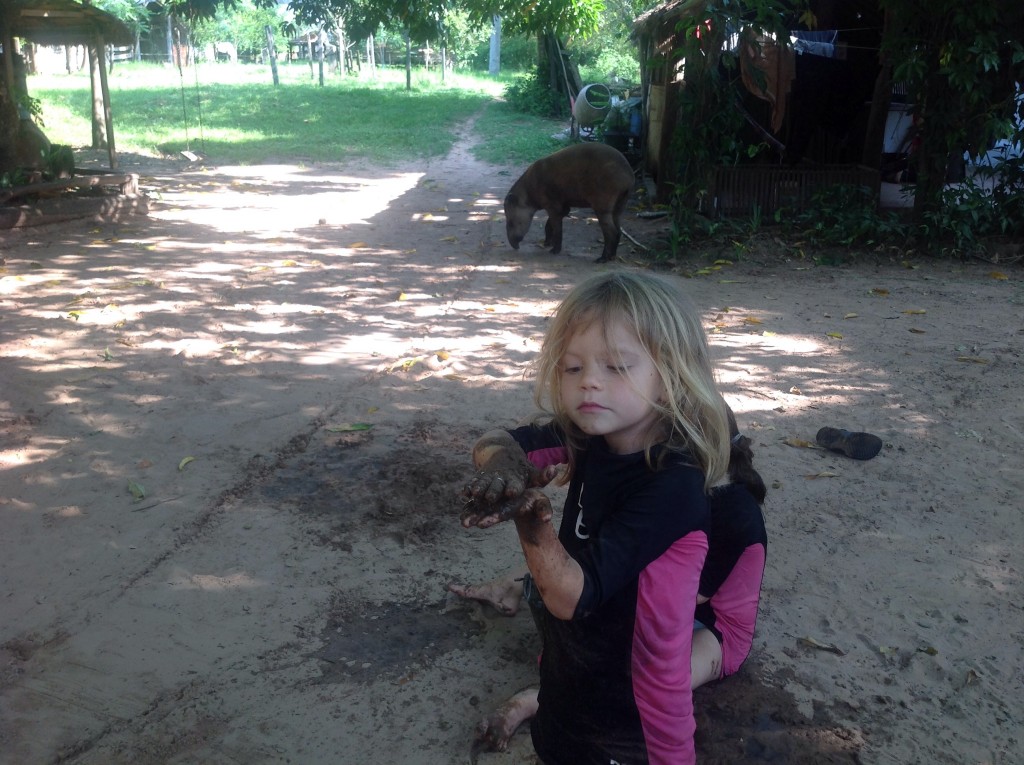
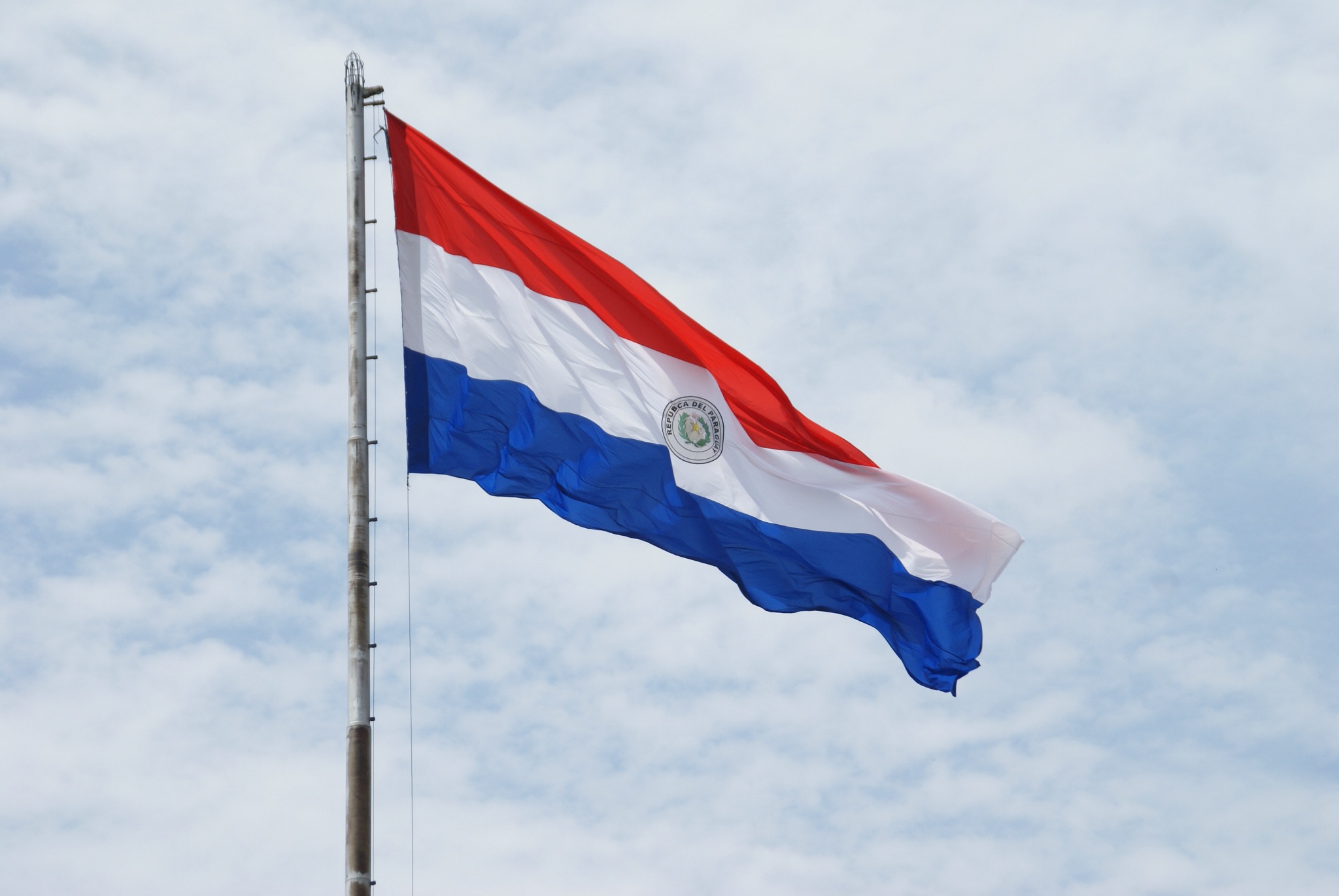 Lucy
It was sooooo hot when we drove across the Chaco I had to take all my clothes off, apart from my knickers. There are so many places in Paraguay where there is so many mosquitoes. I must be super tasty as they kept on eating me.
We thought we saw a big bit of rubber in the road but then it moved, it was a long green snake. We went to this campsite with howler monkeys, marmoset, parrots and lots of fish and snakes but me and Alisha's favourite animal was a baby rabbit. I got to hold it and feed it carrot.
Alisha
After leaving Argentina we found our way to Paraguay. Paraguay is a sociable, friendly country and I made several friends but nothing could distract me from my dreadful mosquito bites. They tortured me through the night and all day, I'll be glad when we get to the mountains (Steve's comment: at least 3 months away!).
Lucy and I made a poster about Paraguay in school:
Lucy
It was sooooo hot when we drove across the Chaco I had to take all my clothes off, apart from my knickers. There are so many places in Paraguay where there is so many mosquitoes. I must be super tasty as they kept on eating me.
We thought we saw a big bit of rubber in the road but then it moved, it was a long green snake. We went to this campsite with howler monkeys, marmoset, parrots and lots of fish and snakes but me and Alisha's favourite animal was a baby rabbit. I got to hold it and feed it carrot.
Alisha
After leaving Argentina we found our way to Paraguay. Paraguay is a sociable, friendly country and I made several friends but nothing could distract me from my dreadful mosquito bites. They tortured me through the night and all day, I'll be glad when we get to the mountains (Steve's comment: at least 3 months away!).
Lucy and I made a poster about Paraguay in school: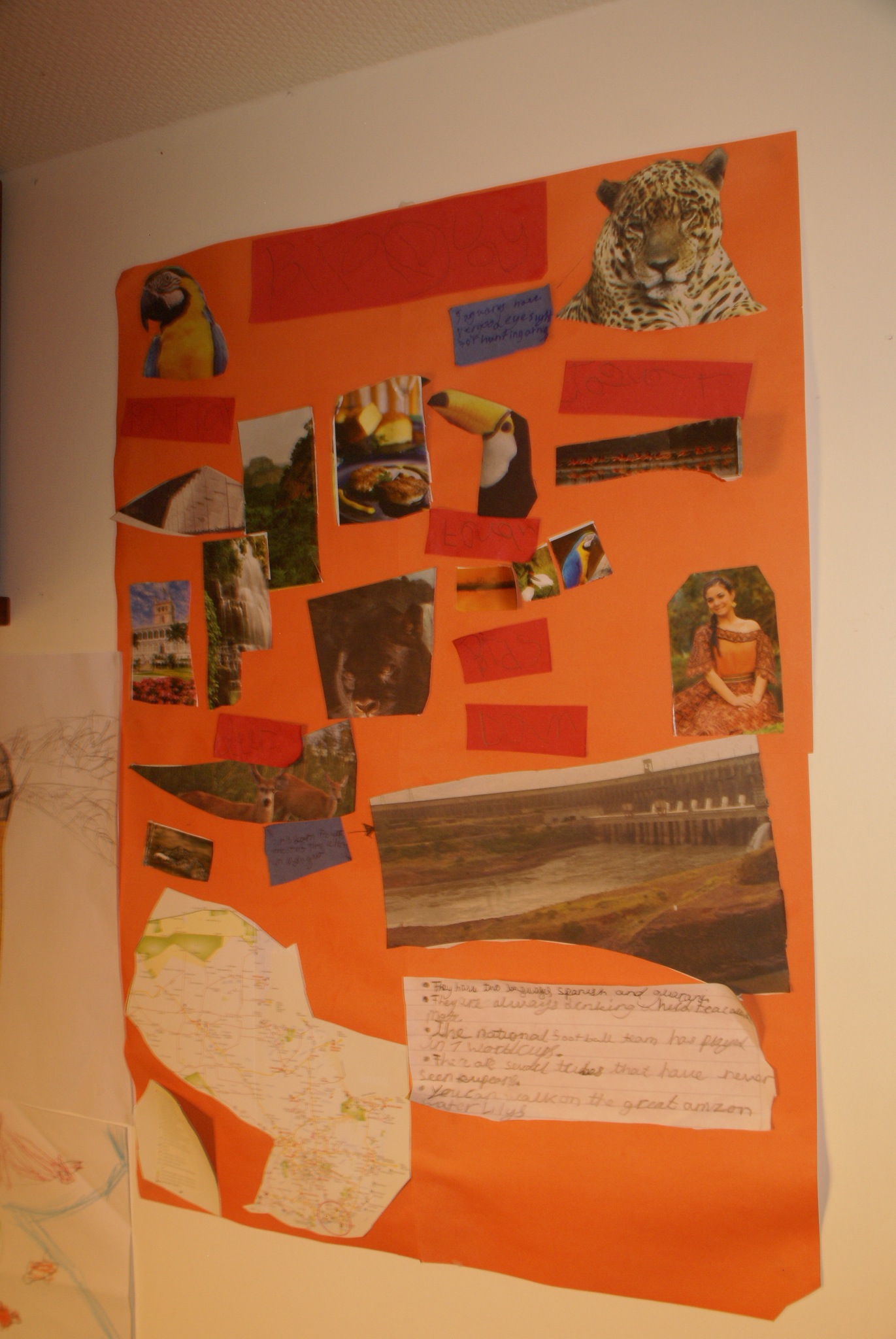 Gilly
We've enjoyed our time in Paraguay, it is quite a diverse country in terms of geography, the wet red clay of the east to the dry Chaco of the west, and population. So it has been hard to get a fully formed opinion on the place, especially after just 9 days. It's a country of farms, crops to the east and cattle to the west. With most of the population centred around the riverside capital Ascuncion. Most of the farming we've seen hasn't been intensive though, leaving large sways of overgrown pasture to admire. The heat and mosquitoes have been a bit of a shock after our Southern Hemisphere winter but we are getting used to it and adjusting our routine to cope.
The missions were set up by Spanish Jesuits in the 17th Century, not only to teach about God but also as collective farms with the Guarani Indians. This also helped protect the Indians against Portuguese slave traders. It was fascinating to learn about these unusual societies and how they divided opinions: to many they were seen as utopian societies but to the Spanish and Portuguese rulers they were a huge headache, especially as they were their commercial competition. Eventually the Jesuits were expelled, mostly due to political wrangling in Europe. The missions dissolved and the Guarani suffered at the hands of the slave traders.
Steve
We only spent 9 days in Paraguay so it was not possible to get a full feel for the country. In reality the country consists of two parts. The Eastern side is lush, verdant with thick red mud. This is where most of the population lives and is heavily farmed. The Western side consists of the Chaco which is virtually unpopulated and starts off fairly wet and swampy but gets gradually drier as you move west.
Very few tourists visit Paraguay and there are hardly any guide books. Instead we read "At the tomb of the Inflatable Pig" which is a travel book written just over 10 years ago that takes you through Paraguayan history. Not that it is a very pretty history. One of conquest, dictators, horrors and some dreadful wars. The Paraguay we saw seemed more settled and starting to prosper. Tourist infrastructure was been put in place and whilst there are still lots of poor around there is also a growing middle class.
Paraguay for us was also a return to the heat. And whilst it is only spring here the thermometer still touched 40 degrees. Whilst the Missions were interesting I found the endless Chaco enthralling. Whilst we did not see much wildlife the landscape was fascinating. There are large cattle farms along the road but in effect the cattle just roams in the natural vegetation. Unfortunately we could not drive the whole Chaco otherwise we would have been back in Bolivia so half way along we turned East again for Brazil.
Gilly
We've enjoyed our time in Paraguay, it is quite a diverse country in terms of geography, the wet red clay of the east to the dry Chaco of the west, and population. So it has been hard to get a fully formed opinion on the place, especially after just 9 days. It's a country of farms, crops to the east and cattle to the west. With most of the population centred around the riverside capital Ascuncion. Most of the farming we've seen hasn't been intensive though, leaving large sways of overgrown pasture to admire. The heat and mosquitoes have been a bit of a shock after our Southern Hemisphere winter but we are getting used to it and adjusting our routine to cope.
The missions were set up by Spanish Jesuits in the 17th Century, not only to teach about God but also as collective farms with the Guarani Indians. This also helped protect the Indians against Portuguese slave traders. It was fascinating to learn about these unusual societies and how they divided opinions: to many they were seen as utopian societies but to the Spanish and Portuguese rulers they were a huge headache, especially as they were their commercial competition. Eventually the Jesuits were expelled, mostly due to political wrangling in Europe. The missions dissolved and the Guarani suffered at the hands of the slave traders.
Steve
We only spent 9 days in Paraguay so it was not possible to get a full feel for the country. In reality the country consists of two parts. The Eastern side is lush, verdant with thick red mud. This is where most of the population lives and is heavily farmed. The Western side consists of the Chaco which is virtually unpopulated and starts off fairly wet and swampy but gets gradually drier as you move west.
Very few tourists visit Paraguay and there are hardly any guide books. Instead we read "At the tomb of the Inflatable Pig" which is a travel book written just over 10 years ago that takes you through Paraguayan history. Not that it is a very pretty history. One of conquest, dictators, horrors and some dreadful wars. The Paraguay we saw seemed more settled and starting to prosper. Tourist infrastructure was been put in place and whilst there are still lots of poor around there is also a growing middle class.
Paraguay for us was also a return to the heat. And whilst it is only spring here the thermometer still touched 40 degrees. Whilst the Missions were interesting I found the endless Chaco enthralling. Whilst we did not see much wildlife the landscape was fascinating. There are large cattle farms along the road but in effect the cattle just roams in the natural vegetation. Unfortunately we could not drive the whole Chaco otherwise we would have been back in Bolivia so half way along we turned East again for Brazil. 















